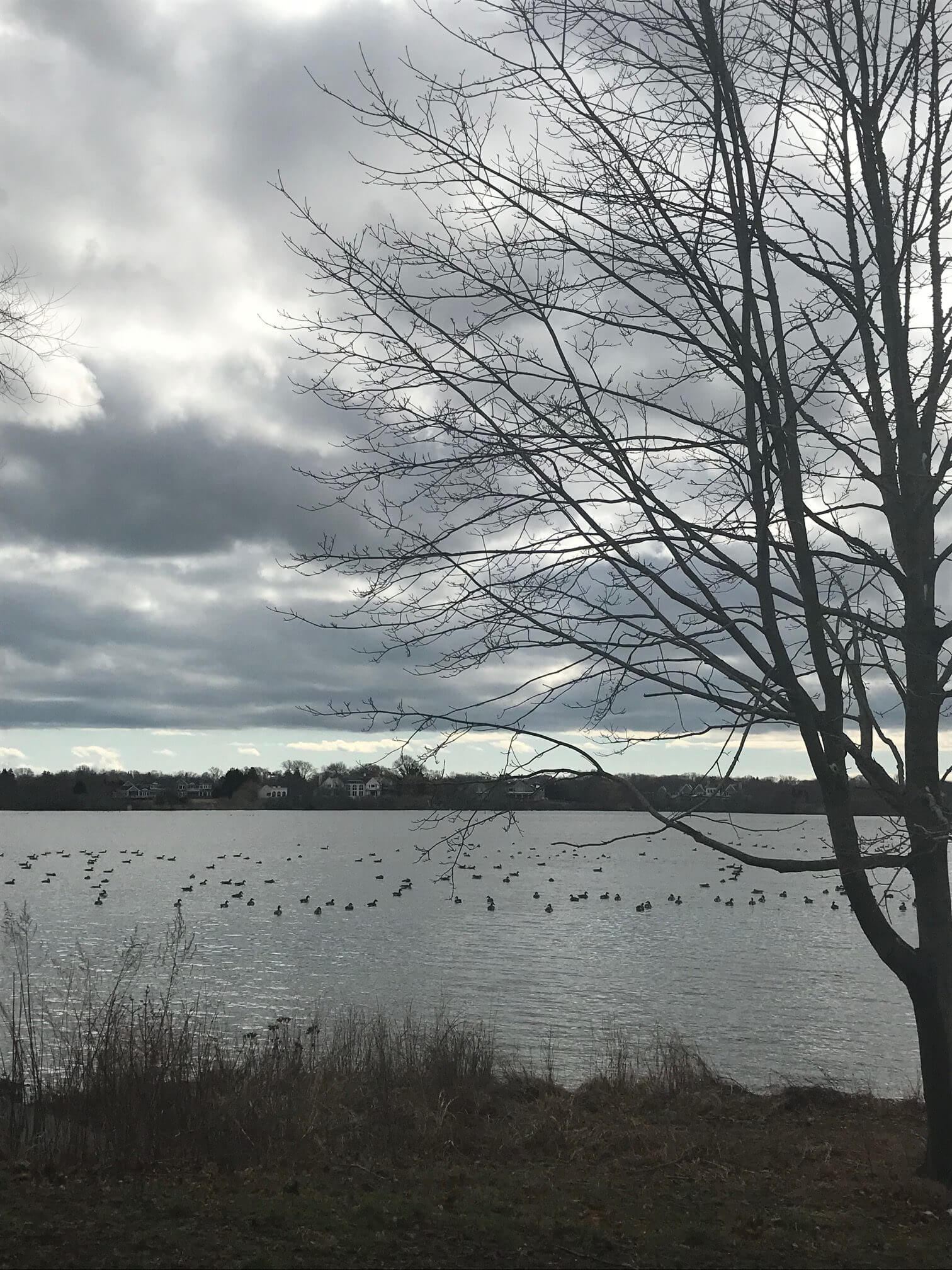Mull New Mill Pond Plan

Mill Pond was once “the best swimming hole in the whole Town of Southampton,” Steve Abramson of the Mill Pond Association recalled. Nowadays, “the blue green algae gets so dense, it looks like someone dumped paint in there,” Trustee Ed Warner said. Signs warn visitors against even touching the contaminated waters, which could sicken them.
For close to a decade, officials have tried varied techniques to ameliorate the contamination. Last Thursday the Southampton Town Board hosted a discussion with Abramson, town trustees, hydrologist Christopher Schubert of the United State Geological Survey(USGS), and Dr. Stephen Souza, an expert with the ecological and engineering consulting firm Princeton Hydro, with an eye toward conducting a comprehensive limnological assessment of the pond. (Limnology is the study of biological, chemical, and physical features of lakes and other bodies of fresh water.)
Founder of Princeton Hydro, Dr. Souza’s expertise encompasses aquatic resource restoration and management, aquatic ecosystem sampling and investigations, and stormwater quality modeling and management. His study would be a step towards creating a management plan for Mill Pond.
The pond is adjacent to fertilized farm fields, Supervisor Jay Schneiderman noted. Councilwoman Christine Scalera offered that atmospheric decomposition and septic systems could also contribute to the problem. Even the volume of geese that visit the pond could be considered. Four geese produce as much waste as a single septic system, Dr. Souza informed.
The idea is to conduct an eight to 12-month study, “to have a place of departure,” Councilman John Bouvier explained. “You can’t have a solution until you’ve found the problem.”
Town trustees have conducted extensive monitoring and “a lot of groundwork” at the pond, Warner emphasized. Stormwater coming down Deerfield Drive was considered among the culprits, but new drainage has been installed to mitigate the runoff. The drainage wasn’t in place when an earlier project was underway. About five years ago, a mineral compound called Phoslock was spread across the lake to reduce levels of phosphates, but heavy rains and runoff derailed the project. Warner suggested, “The process we started needs to be continued.”
Schubert noted the USGS conducted an analysis of town water bodies between 2001 and 2008 to define the overall health of surface and groundwater quality. The focal point wasn’t Mill Pond, but it was sampled on a quarterly, then annual basis. The data did pose the question of whether there was an internal source of phosphorous in the pond. Dr. Souza said he would include the data in his diagnosis.
Can Mill Pond be remediated within the financial ability of the community? Schneiderman asked the expert. That depends on what the data, collected over an estimated four-month period, reveals, Souza explained. He said he will try to recommend “sustainable techniques” that result in measurable improvements in the water quality in the pond.
As the discussion came to an end, Abramson thanked the town board and trustees for “getting together to produce something that makes sense.” He said he looks forward to the restoration of the health and recreational use of the important natural resource and envisions “a swimmable body of water one day.”
Souza spoke to those assembled via Skype. Wonky audio had speakers and the experts repeating questions often. Bringing discourse to a conclusion, Schneiderman said to Souza, “I don’t know if you can hear this, but you’re hired.”
kmerrill@indyeastend.com



